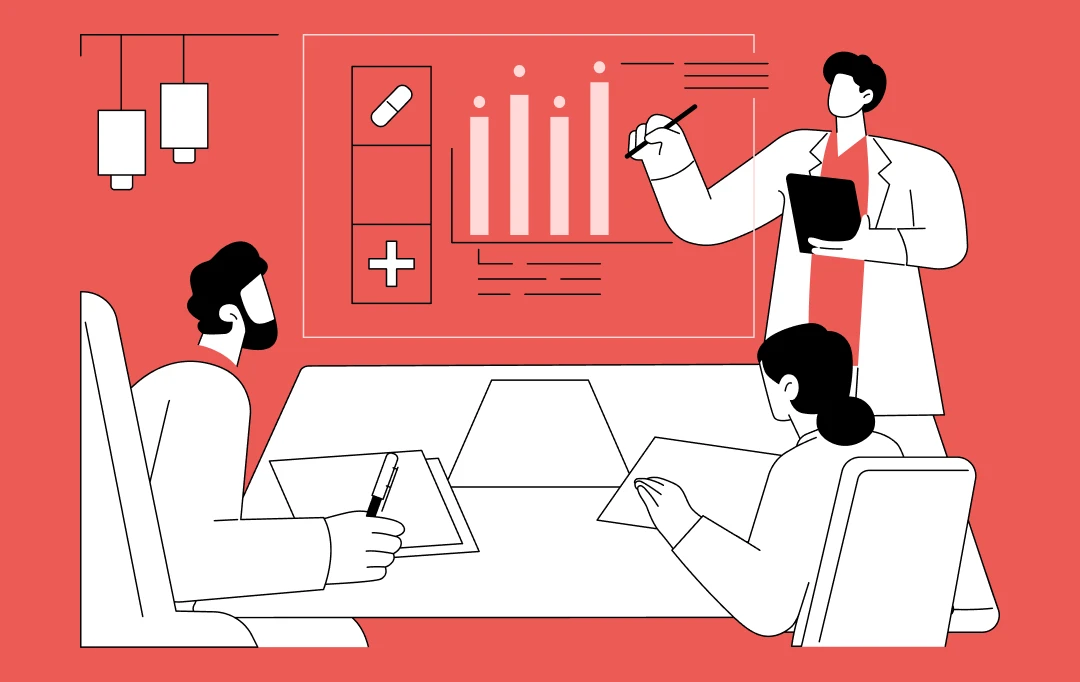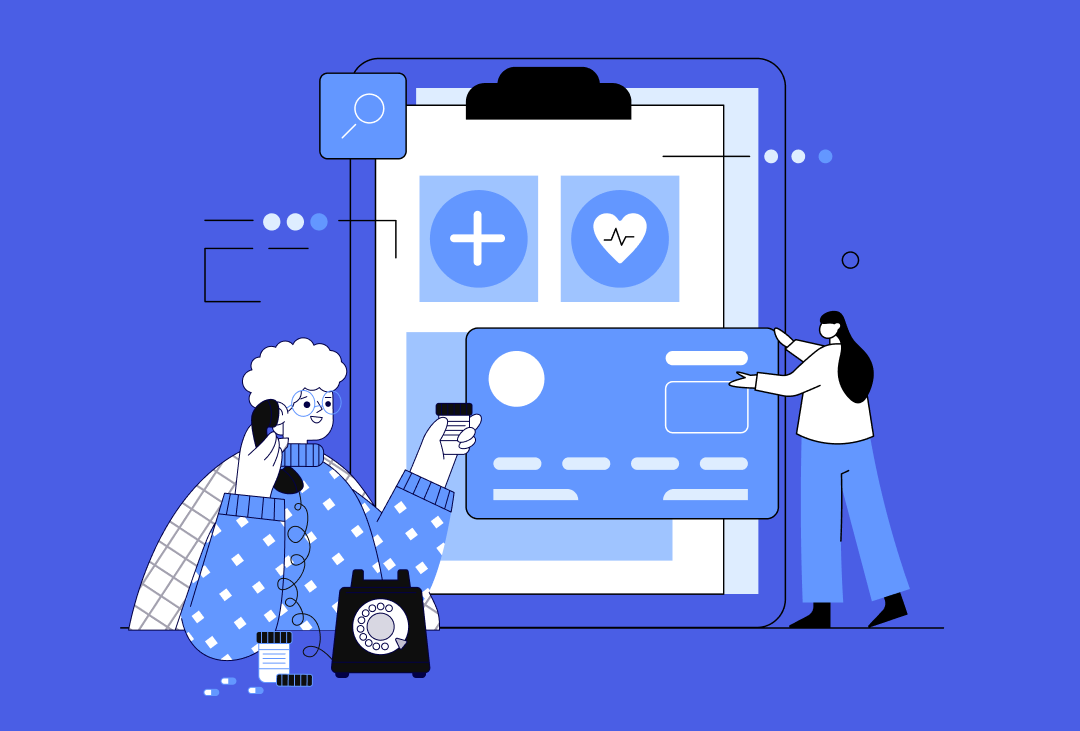- Understanding the Need for Healthcare Legacy System Modernization
- Exploring the Types of Legacy Healthcare IT Systems
- 1. Electronic Health Record (EHR) Systems
- 2. Hospital Information Systems (HIS)
- 3. Laboratory Information Systems (LIS)
- 4. Picture Archiving and Communication Systems (PACS)
- 5. Radiology Information Systems (RIS)
- 6. Telemedicine Systems
- 7. Claims Processing Systems
- 8. Patient Engagement Systems
- Top Methods of Upgrading Legacy Medical Systems
- 1. Evaluation and Record-Keeping
- 2. Specify Integration Goals
- 3. Choose an Integration Method
- 4. Integration of Middleware
- 5. API Integration
- 6. Data Migration
- 7. Testing
- 8. Implementation
- 9. Monitoring and Optimization
- Healthcare Legacy System Modernization Use Cases and Examples
- 1. Mayo Clinic’s EHR Platform Modernization
- 2. Siemens Healthineers’ Diagnostic Imaging System Evolution
- 3. Cleveland Clinic’s Digital Transformation
- 4. Optum360’s Billing and Revenue Cycle Management Optimization
- Legacy Systems in Healthcare Challenges and Solutions to Overcome Them
- 1. Interoperability
- 2. Outdated User Interface
- 3. Security Concerns
- 4. Patient Engagement
- 5. Data Silos
- How Can Appinventiv Help You Modernize Your Healthcare Legacy Systems?
- FAQs
In the modern healthcare landscape, integrating advanced technologies into solutions is not just a choice but a necessity to guarantee operational effectiveness, improve data interoperability, and provide the best possible patient care in line with the changing industry standards. Resurrecting legacy systems through HealthTech innovation is necessary for a digitally transformed healthcare ecosystem.
The need for modernizing legacy systems in the healthcare industry can be attributed to the swift advancement of technologies, such as legacy modernization with artificial intelligence, robotic process automation, and machine learning in healthcare industry.
In this blog, we will study the cruciality of modernizing legacy systems in healthcare, the types of legacy healthcare systems, the top legacy medical system upgrade methods, use cases of healthcare legacy systems modernization, the associated challenges, and the solutions to overcome them. Let’s delve deeper.
Understanding the Need for Healthcare Legacy System Modernization
Legacy systems, in the context of healthcare, refer to software that no longer receives updates or enhancements from its original vendor. While these systems handle fundamental functions, they stagnate in terms of development, remaining at their initial state. Surprisingly, legacy systems are still in use by over 70% of Fortune 500 companies, demonstrating their persistent prevalence.

As per Statista, the majority of surveyed organizations in 2023 are placing a high priority on modernizing their legacy applications and data systems, with more than 50% citing increased efficiency and security as their main reasons. Nearly half of the participants highlighted cost reduction, improved integration with new-age technologies, and more agility and flexibility as critical goals.
A tangible example in the healthcare industry is the continued use of obsolete electronic health records (EHR). These systems frequently have antiquated user interfaces, incompatible, and cybersecurity flaws. When a system lacks contemporary features like scalability, strong data analytics, and AI capabilities, it becomes more expensive and impedes improving patient care and operational efficiency.
Let’s have a look at the types of legacy systems in healthcare to have a better understanding of why these systems need to be upgraded with the latest technologies for optimal functionality.
Also Read: 8 Steps to Building a Software Modernization Strategy that Delivers Results
Exploring the Types of Legacy Healthcare IT Systems
A range of healthcare software solutions previously used to support different functions within the healthcare sector are included in legacy healthcare IT solutions. These are a few common types:

1. Electronic Health Record (EHR) Systems
Early iterations of EHR systems prioritized maintaining simple patient records. These systems, with time, might not have the cutting-edge functionalities, interoperability, and intuitive user interfaces found in advanced EHRs.
2. Hospital Information Systems (HIS)
Systems that oversee different administrative, financial, and clinical facets of hospital operations are included in legacy HIS. Outdated HIS may struggle with interoperability, real-time data access, and modern reporting capabilities.
3. Laboratory Information Systems (LIS)
These systems manage laboratory data, including workflow and test outcomes. Data standardization issues and a lack of integration capabilities with more modern diagnostic technology are potential problems for legacy LIS.
4. Picture Archiving and Communication Systems (PACS)
Medical image storage and retrieval are the major functionalities of legacy PACS. Older systems may face challenges in terms of compatibility with modern imaging technologies and integration capabilities.
5. Radiology Information Systems (RIS)
RIS monitors radiological imaging workflows, scheduling, and invoicing. Older RIS may not have capabilities like automatic appointment scheduling and may have issues integrating with more recent RIS.
6. Telemedicine Systems
Outdated telemedicine systems are part of legacy systems in healthcare communications infrastructure. These healthcare systems must be upgraded to provide safe communication and enable effective telehealth services.
Appinventiv’s experts played a pivotal role in enhancing YouCOMM, a proficient healthcare system, by introducing additional features that significantly improved real-time response rates of in-hospital nurses.

Currently, more than seven hospital chains in the US use the YouCOMM solution.
7. Claims Processing Systems
These systems manage billing and reimbursement procedures between payers and healthcare providers. The intricacies of modern billing rules and regulatory changes pose a major challenge for outdated claims processing systems.
8. Patient Engagement Systems
Early patient engagement systems often lack the user-friendly interfaces and features of contemporary solutions. These systems must be upgraded to promote active patient participation in their healthcare.
These outdated healthcare legacy systems must be transformed to fulfill the demands of data security, interoperability, and technological developments as the healthcare landscape evolves. Let us now look at the methods of upgrading legacy medical systems.
Top Methods of Upgrading Legacy Medical Systems
The upgrade of legacy data systems in healthcare involves strategic approaches to modernizing and enhancing outdated healthcare solutions, ensuring they align with current industry standards and technological advancements. Here are some of the top steps involved in modernizing legacy systems in healthcare:

1. Evaluation and Record-Keeping
Make a detailed evaluation of the current legacy systems, noting their reliability, functionality, and data structures. Record the precise specifications and objectives for integration, taking security and scalability into account.
2. Specify Integration Goals
Precisely articulate your integration goals, be it better data flow, more functionality, or compliance with advanced technologies. Align these with your healthcare organization’s goals to ensure that the integration strategy contributes to overall business success.
3. Choose an Integration Method
Based on the evaluated requirements and the current infrastructure, choose an integration strategy- Data migration, APIs, middleware, or a mix of these available options. Consider the long-term sustainability and scalability of the chosen method to ensure that it aligns with the organization’s evolving needs.
4. Integration of Middleware
When employing middleware, ensure it can facilitate communication between contemporary apps and legacy systems. Configure middleware to guarantee smooth data transport and system interoperability.
5. API Integration
When utilizing APIs, create or choose ones that work with contemporary and legacy apps.
To protect data during integration, ensure the right authorization and authentication procedures are in place.
6. Data Migration
Plan and carry out the data migration process from old legacy systems in healthcare infrastructure to the new environment. Verify the consistency and accuracy of the data after migration.
7. Testing
To ensure the integrated systems work as planned, thoroughly test them. Conduct user acceptability, integration, and unit testing to detect and fix bugs and glitches.
8. Implementation
To minimize disruptions to routine operations, adopt a phased and gradual approach to the integration process. Monitor the integration process and resolve challenges, if any.
9. Monitoring and Optimization
Use monitoring tools to keep track of user comments and system performance. Continue to upgrade the integrated systems in response to changing business requirements and user experiences.
Healthcare legacy system modernization approaches help organizations create a more unified and effective IT infrastructure that adapts to the changing business requirements of the healthcare sector. To understand this better, let’s look at the top use cases of legacy data systems in healthcare.
Healthcare Legacy System Modernization Use Cases and Examples
From enhancing data interoperability for streamlined patient care to implementing AI-driven analytics for informed decision-making, these popular use cases of legacy systems in healthcare demonstrate the tangible benefits of updating older legacy systems in healthcare.

1. Mayo Clinic’s EHR Platform Modernization
Mayo Clinic, a leading healthcare provider, has effectively wrapped up a $1.5 billion project to update its electronic health records (EHR). The Mayo Clinic’s facilities in Wisconsin started the process, progressively migrating its current Cerner and General Electric systems into the Epic EHR platform. This calculated approach targets smaller clinics and outlying locations while increasing Epic’s clout within large healthcare organizations.
Owing to this technical advancement, Mayo Clinic specialists can now utilize state-of-the-art solutions and collaborative care systems connected to their electronic health records to provide high-quality treatment, conduct cutting-edge research, and assist with teaching.
2. Siemens Healthineers’ Diagnostic Imaging System Evolution
Siemens Healthineers addressed the challenge of outdated diagnostic imaging technology impacting accuracy and efficiency by introducing innovative solutions with AI integration. This transformative approach helped healthcare providers with advanced image analysis capabilities, significantly improving the precision of diagnostic evaluations.
The result is enhanced patient outcomes, as the integration of artificial intelligence in diagnostic imaging systems elevated the precision and effectiveness of medical diagnoses.
3. Cleveland Clinic’s Digital Transformation
The Cleveland Clinic led an extensive digital revolution in the last ten years, completely changing how medicine is practiced. The Cleveland Clinic utilized telemedicine to improve provider efficiency in the face of the era of bundled payments, providing patients with a more sensible and affordable alternative to in-person consultations.
With this rapid approach to digital transformation, the Cleveland Clinic increased the number of people who could access its telehealth services from 2% to an astounding 75% in less than two weeks.
4. Optum360’s Billing and Revenue Cycle Management Optimization
An extensive solution was launched by Optum360 in response to the challenge presented by outdated billing systems that resulted in errors and delays in revenue cycle management.
Optum 360 then introduced advanced billing and revenue cycle management systems using state-of-the-art automation and data analytics technology. This tactical strategy aimed to eliminate errors in the billing procedures, accelerate the reimbursement cycles, and promote the financial stability of healthcare organizations.
These were some of the popular legacy systems in healthcare use cases that explain the myriad advantages of healthcare legacy systems. Let’s now have a look at the challenges associated with such systems and solutions to overcome them.
Legacy Systems in Healthcare Challenges and Solutions to Overcome Them
Legacy systems in healthcare often pose challenges, making it more difficult for them to function optimally and adapt. To address these issues, strategic solutions collectively pave the way for a resilient and future-ready healthcare ecosystem.

1. Interoperability
Interoperability issues in outdated healthcare systems must be resolved for thorough data interchange. Adopting standardized data formats gives the industry a common vocabulary for smooth communication, such as Fast Healthcare Interoperability Resources (FHIR).
Furthermore, utilizing middleware solutions improves the ability to translate and integrate data, facilitating a smooth information flow. In addition to overcoming the shortcomings of legacy systems, this strategic integration lays the groundwork for a healthcare environment that is more networked and interoperable.
2. Outdated User Interface
Improving the overall user experience and operational effectiveness in healthcare settings requires a complete overhaul of outdated user interfaces. Healthcare workers can work more intuitively and productively by introducing user-friendly interfaces with intuitive designs that streamline navigation and interaction.
Strong training programs should be implemented to ensure that healthcare professionals are competent in utilizing and navigating the new interfaces, hence facilitating a seamless transition. This dedication to updating user interfaces improves user experience and increases efficiency, raising the standard of patient care.
3. Security Concerns
It is critical to address security issues in older healthcare systems to protect patient data from potential threats. Establish a robust defense against threats with intrusion detection systems, routine audits, and encryption, which are the key components of a comprehensive cybersecurity strategy.
Another strategic option is switching to more contemporary platforms with robust data security features. Healthcare companies should strengthen their digital infrastructure, guarantee the safety and confidentiality of critical patient data, and remain aware of malicious cyberattacks.
4. Patient Engagement
Proactive modernization is necessary to overcome legacy system-related limits on patient engagement. Implementing integrated patient portals, mobile applications, and communication tools enhances the options for interaction and promotes a more informed and involved patient community.
Moreover, the use of personalized health records increases participation by giving people easily accessible and customized health information.
Health-e-People is a perfect example of how our healthcare IT consulting services have produced tangible outcomes for the client. Health-e-People is a multi-dimensional healthcare platform that delivers user-centric solutions to patients and streamlines their healthcare records. With the effort of our experts, Health-e-people became the no.1 user-centric healthcare platform that benefitted caregivers and patients.

Through the use of cutting-edge, user-centric technologies, this all-encompassing approach not only closes the gap left by legacy limits but also empowers patients by promoting active engagement in their healthcare process.
5. Data Silos
Achieving a thorough and integrated patient care strategy requires addressing the data silos that are common in older healthcare systems. One important approach is system integration, which dismantles data silos and provides a uniform view of patient data. Adhering to interoperability standards and embracing data exchange protocols are essential to breaking down silos and promoting cooperation amongst various parts of the healthcare ecosystem.
In addition to helping healthcare providers make better decisions, this coordinated effort fosters the development of a more unified and patient-centered healthcare environment in which data is smoothly transferred between different care sites.
How Can Appinventiv Help You Modernize Your Healthcare Legacy Systems?
Healthcare applications have the potential to transform patient care completely, but this will depend on how well they integrate with the legacy systems in healthcare that underpin much of the healthcare sector. Even with challenges, the modernization of legacy healthcare IT systems offers a host of advantages. Thus, healthcare’s future trajectory calls for the coexistence of legacy systems and contemporary apps that have the potential to enhance patient outcomes and the system’s overall efficacy.
Appinventiv’s legacy healthcare solutions are centered on facilitating the smooth integration of advanced technologies with legacy systems, which continue to serve as the backbone of the healthcare industry. Businesses can reap benefits, including improved data accessibility, faster processes, more patient interaction, and strengthened compliance and security measures by enabling this connectivity.
Our healthcare software development services pave the way for a future-ready healthcare ecosystem where legacy healthcare IT systems seamlessly interface with cutting-edge applications, fostering continual improvement in patient care and operational excellence.
Are you prepared to update your legacy systems in healthcare? Connect with our experts today!
FAQs
Q. What are the advantages of modernizing healthcare legacy systems?
A. Here are some of the benefits of modernizing healthcare legacy systems:
Improved Patient Care: Modernized systems provide healthcare professionals with complete access to comprehensive and real-time patient data. This enables more efficient and precise diagnosis, customized treatment regimens, and enhanced patient care.
Cost-Effectiveness: Considering the substantial upfront costs, updating and upgrading legacy systems prove to be more economical than introducing completely new ones.
Enhanced Operational Efficiency: Modern technologies can be implemented, workflows can be streamlined, and manual processes can be reduced by upgrading legacy systems.
Security and Compliance: Outdated security mechanisms on legacy systems make them vulnerable to security issues. By modernizing, you can ensure strong cybersecurity measures are being implemented, keeping patient data secure and ensuring compliance with evolving regulatory requirements.
Integration Capability: By connecting older systems to more recent applications and technologies, modernization initiatives can improve the integration capabilities of those systems.
Q. How can healthcare organizations effectively manage the maintenance costs of healthcare legacy systems?
A. Prioritizing updates and upgrades in accordance with security patches and healthcare compliance regulations are essential for efficiently managing the maintenance costs of healthcare legacy systems.
Also, setting up a strong change management procedure is essential. This procedure minimizes interruptions in ongoing operations by facilitating meticulous update planning and execution. An organized change management strategy guarantees a seamless transition during maintenance tasks, which helps to control maintenance expenses related to older systems.
Q. What measures can organizations take to guarantee a seamless modernization transition?
A. Effective change management, staff training initiatives, phased implementation plans, and constant stakeholder involvement are all necessary to guarantee a seamless transition.
Q. What factors do you need to consider before initiating your healthcare legacy system modernization process?
A. Before initiating the healthcare legacy system modernization process, several essential factors should be taken into consideration to ensure a successful transformation:
- Define clear goals and objectives
- Engage stakeholders
- Create a comprehensive roadmap
- Consider scalability
- Choose the right technology stack
- Evaluate security measures
- Apply change management strategy



Why Telehealth Security is Non-Negotiable for Patient Trust and How to Achieve It
Key takeaways: Telehealth security is crucial for patient trust and the continued adoption of digital healthcare services. The rising tide of cyber threats, from ransomware to inadequate authentication, poses significant risks to patient data and provider reputation. Implementing robust security measures like end-to-end encryption, multi-factor authentication, and regular audits is non-negotiable. Compliance with regulations like…

10 Ways Healthcare Providers Are Using Patient Analytics to Enhance Care Plans and Optimize Outcomes
Imagine a world where doctors don’t just react to health crises, but predict and prevent them before they happen. This is the reality with patient analytics for healthcare providers. The healthcare industry is no longer limited to treating symptoms—it’s now about understanding patterns, making smarter decisions, and delivering care that’s truly personalized. And it’s not…

Exploring the Role of Personalization in Healthcare through Technology
Key takeaways: Personalization in healthcare transforms patient care from generic, population-based treatments to individualized approaches tailored to each patient's unique needs. Advanced technologies like AI, IoMT, and genomics are the core enablers for tailoring medical treatments. Personalization drives significant benefits, including improved patient outcomes, higher engagement, and reduced costs. The future of healthcare is hyper-individualized,…

















